#seaworld
Text
Damn, Not Imperial SeaWorld

#the bad batch#star wars#tbb season 3#tbb omega#tbb echo#tbb wrecker#tbb crosshair#tbb hunter#tbb spoilers#starwarsblr#gif#seaworld#shitpost#meme#the clone wars#zillo beast
245 notes
·
View notes
Text

#not mine#girlblogging#diary#starfish#ocean#beaches#key west kitten#pale grunge#mermaidcore#coquette#sirencore#dreamcore#nostagiacore#seaworld#seascape#oceancore#coconut girl#mercoquette#pale aesthetic#ocean aesthetic#mermaid aesthetic#mermaidcoquette#aphrodite aesthetic
2K notes
·
View notes
Note
Hi! Given your experience working with marine mammals and intelligent views on cetacean captivity, I wanted to ponder the following. Here in the Netherlands is a cetacean (mostly porpoise) rescue organisation. After years of having no facilities, and having a 100% kill policy unless a porpoise could be returned straight away, they finally have a gorgeous rescue facility again.
Recently they announced the facility would be getting an outdoor expansion, featuring habitats emulating the Wadden Sea ecosystem. Providing both education about its inhabitants, as well as a place for late-stage rehab porpoises to spend their last weeks before release outside, in a larger habitat. And, in case an animal is non-releasable, provide an adequate space to hold them for while while next steps are being assessed.
The response was overwhelmingly negative. Most of their following is cetacean-smitten, but completely anti-cap (of the emotional, uninformed type). They all bristled at the idea that perhaps a few sharks and seals would be kept there "and then you'd be no better than a zoo!" (which is of course the worst thing to be). But mostly: the amount of people saying they would honestly rather see a non-releasable porpoise killed, because death is preferable to spending a single day in captivity ("because that is what I would want"), is frankly staggering. What do you say to these people??? A rescue facility is getting a beautiful outdoor expansion - GREAT! How can someone claim to love the animals so much when they would rather see them dead than in a situation that makes them personally uncomfortable? It just boggles my mind and frustrates me to no end.
Tl;dr: people want rescued porpoises dead because they might end up in captivity, and have you found an appropriate response to this ridiculous line of thinking?
Wow that's really amazing that the Netherlands is stepping up like that! It sounds like a great option for rehab and also to provide much needed education about porpoises to the public.
Honestly my response to those people is pretty much what you said: "Why do you want to see these animals dead just because it makes you personally unhappy to see them in human care?"
I think it's important to call out these comments as what they are: advocating for the death of animals. It's not noble, it's people projecting their own guilt complexes (of something they have no control) over onto animals.
And that is what a lot of anti captivity propaganda relies on - shame and guilt. That's what I remember when I was starting to allow myself to learn more about SeaWorld after being so convinced by Blackfish for a long time. I felt a hollow shame feeling in my chest as if being curious about how killer whales are trained was somehow wrong or bad.
Activist marketing (especially The Dolphin Project and anything from Naomi Rose, Lori Marino and Ingrid Visser) is about making you feel bad for even considering going to marine parks or learning more about cetaceans in human care. As if it would genuinely make a difference on things like Taiji or improve the lives of the animals in any way (it won't and it looks like it's only making things worse at this point)
A lot of these activists have massive egos and savior complexes that are fed by this sort of marketing. As if their snarky comment on Facebook is going to make a difference.
At the end of the day, they're people that have to make zero personal sacrifice (going to a marine park is not a hard thing to do for them) to feel a sense of moral superiority. And that's very reinforcing and feels good.
If you calmly give them the facts about cetacean welfare in human care and tell them exactly what they're advocating for (death or poor welfare)- it may not change their mind (because that's not how our brains work) but it may convince the people reading the comment thread.
161 notes
·
View notes
Note
May I request Shamu the whale?

Shamu has a Ryu Number of 2.
(explanation below)
This is how I learned that there is an officially licensed SeaWorld game where Shamu fights Poseidon, who is trying to bring back Atlantis and therefore needs to replace SeaWorld.
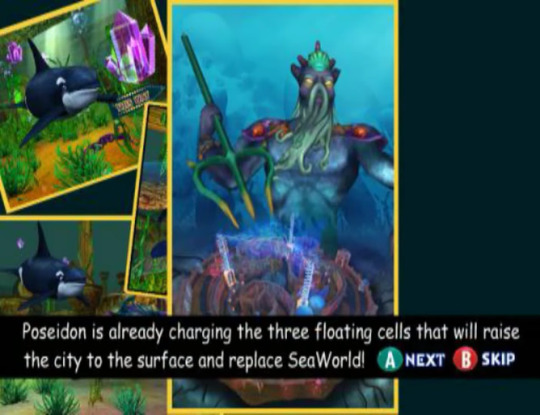
And it was made by the devs behind the Cabela's games, Sand Grain Studios. You know, the hunting games. They even released one the same year as Shamu's Deep Sea Adventures.
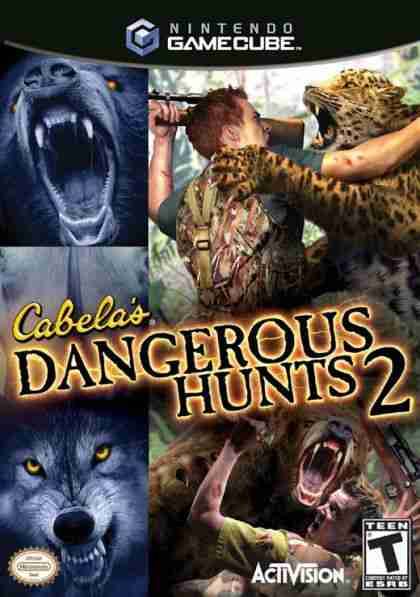
...The duality of man's relationship to animals?
159 notes
·
View notes
Text

Silly lil thing I made
#undertale#artists on tumblr#undertale fanart#digital artist#undertale game#seaworld#papyrus and sans#skelebros#wholesome
217 notes
·
View notes
Note
Glad you’re back!
I am not too familiar with cetacean reproduction, why did Seaworld use AI for their orcas? I am pretty sure that captive orcas would breed the “old fashioned way”, I understand zoos use AI when the animals are having fertility issues, cannot be introduced, etc.
Hey! You’re correct that orcas are more than happy to breed naturally. In fact, most of SeaWorld’s orcas were indeed conceived through what we in the animal husbandry world call “live cover” (aka, good old-fashioned copulation). 
While it has many uses, in SeaWorld’s case, artificial insemination was mainly used to reduce the need to transport animals for breeding purposes. Back in the old days, if you wanted to breed a male in Florida to a female in California,  you would have to ship one of them to the other, with all the expense, logistics, and stress that involves. With AI, only the semen needs to be shipped. While AI has its own challenges (you have to monitor the female’s follicular development and progesterone levels very closely to ensure she is inseminated at the correct time to achieve conception, appropriately prepare the semen for shipment, and train both animals for the procedures), it allowed animals at different parks to be bred without all the stress and social ramifications of a move.
In short, if the animals already live together and are both fertile, it’s much easier to let them breed via live cover. But if they’re several states away, AI was the way to go.
#orcas#killer whales#cetaceans#marine mammals#seaworld#animal breeding#artificial insemination#answered asks#shitsngiggles666
80 notes
·
View notes
Text
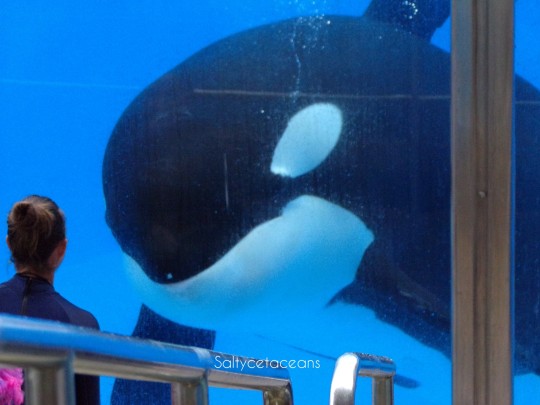
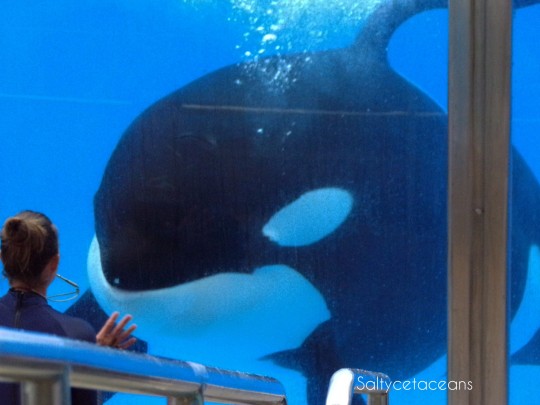
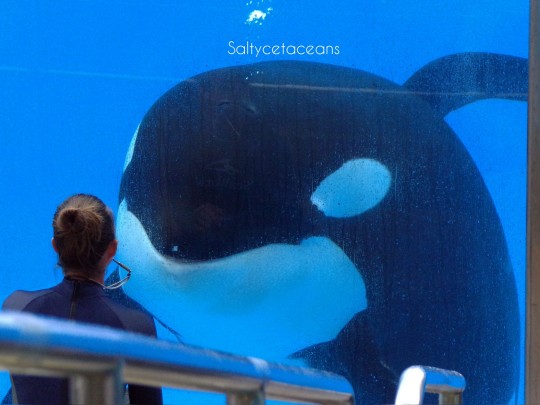

Miss Tina and her trainer having some bonding time with eachother during the husbandry segment <3
#katina#katina orca#seaworld orlando#seaworld#shamu#orca#killer whale#marine biology#dolphin#marine life#animal photography#cetacean#marine animal photography#orcas#killer whales#ceta#cetaceans#sea animals#marine mammals#marine animals#sea#ocean#zoological#ocean life#aquarium#marine
94 notes
·
View notes
Text

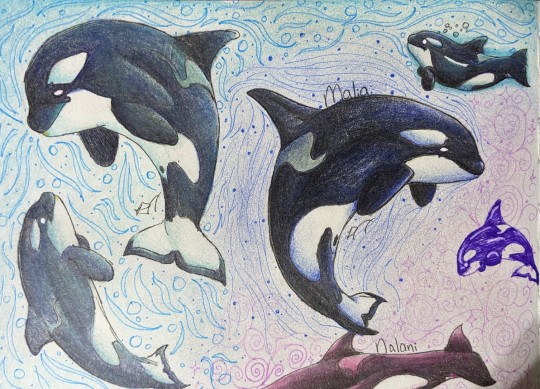


I forgot to post sorry guys, here's some more whale art :o]
#grims art#orca#orcinus orca#orca whale#orcas#killer whales#killer whale#shamu#seaworld#sea#ocean#marine mammals#marine animals#marine biology#marine life#sea animals#sea life#ocean creatures#ocean animals#ocean life#oceanography#aquatic#aquatic animals#aquatic life#artists on tumblr#art#drawing#artwork#artist#tumblr draw
87 notes
·
View notes
Text
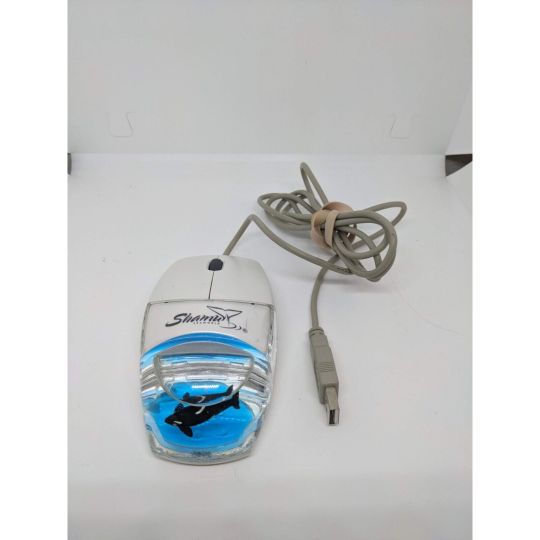
(source)
#aqua mouse#shamu#seaworld#orca#old tech#computer mouse#under 20 (exactly 20)#posting this with the caveat that I don't support seaworld & their treatment of orcas but this is a neat mouse and I feel like folks#would like it#c#paid link#computing#tech
97 notes
·
View notes
Text

Another fine example of our friends at PETA blowing normal orca behavior way out of proportion in an attempt to sell their agenda.
The video does indeed show a small amount of blood in the water, though hardly a bloodbath. It appears that Kalia, the park’s dominant female, raked 57-year-old Corky. Although Corky is significantly older than Kalia, Kalia’s late mother Kasatka was the previous matriarch, and she appears to have inherited the position. Corky has been with Kalia since the day she was born. They are not “incompatible.”
Contrary to PETA’s claims, raking is an extremely common behavior amongst all dolphins, both in the wild and in human care. Anyone who has worked with wild and stranded dolphins can tell you that their bodies are covered in old rake scars. Orcas are incredible animals, but they are not the gentle, peaceful creatures we’ve made them out to be, and just because something makes us uncomfortable doesn’t mean it’s not natural.
Rake wounds bleed superficially, but are not life-threatening in any way. Animals in human care also have the benefit of receiving first aid after a rake. Due to the incredibly high rate of skin turnover in orcas and other dolphins (skin is shed 2-3 times a day) wounds heal very quickly.
So there’s your daily reminder never to trust a single word from PETA on anything related to animals or their care and behavior.
EDIT: It’s come to my attention that the whale raking Corky in the video is in fact Shouka, not Kalia. What we’re seeing here is a small social squabble. Tensions were running high after Nakai’s passing, as the social order of the pod shifted in his absence. Corky let Shouka know she would not be bullied, and they resumed swimming together after the video ended.
833 notes
·
View notes
Text

89 notes
·
View notes
Text
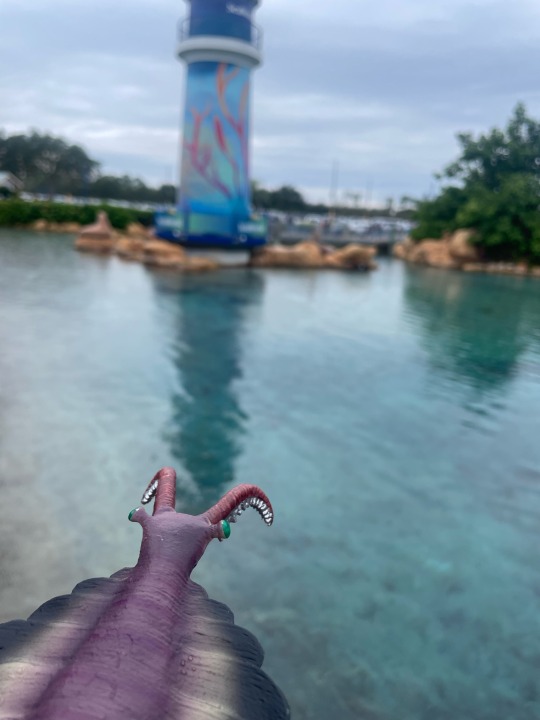




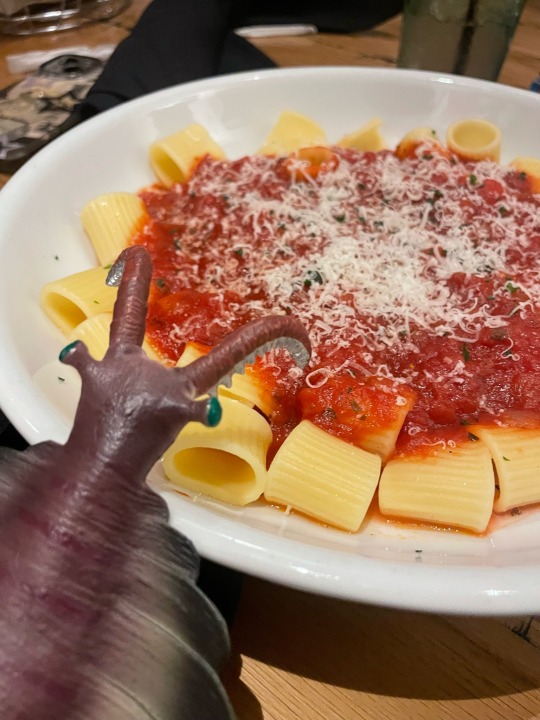
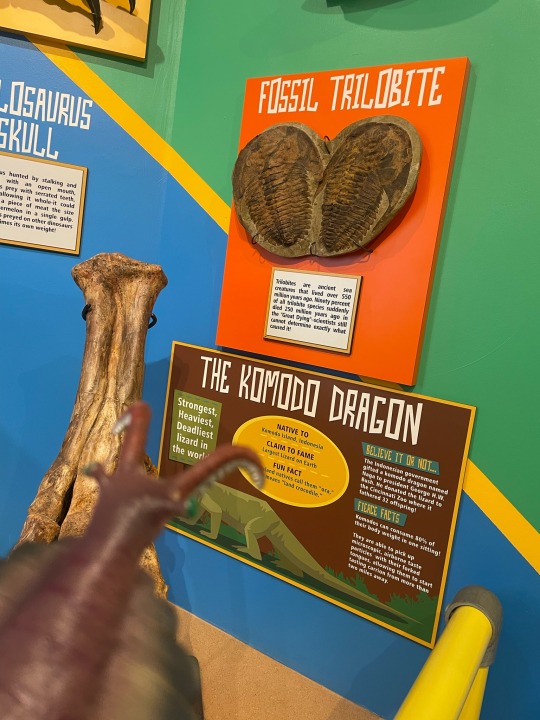



my little anomalocaris friend monet and his trip to orlando but i left him at the hotel and now i am exceedingly upset and very worried and i hope he is okay and i miss him
#i hope he is not lonely#my poor boy#orlando#seaworld#guys i dont support seaworld but my mom bought passes#anomalocaris#anomalopost#pray for him guys#i miss him
38 notes
·
View notes
Text

I really don't have any time or respect for people who call themselves marine mammal scientists while acting as lobbyists and continuously misleading the general public about marine mammal welfare.
Animal welfare is a relatively new scientific field - especially in cetaceans. It's really only in the last few decades that we've been actively studying and determining welfare parameters in dolphins and whales.
That said, we have scientists like Dr. Isabella Clegg, Dr. Jason Bruck, Dr. Heather Hill, Dr. Kelly Jaakkola, Dr. Kathleen Dudzinski, Dr. Fabienne Delfour and many other incredible scientists, research fellows and facilities contributing amazing welfare data.
Not to mention the fantastic global Cetacean Welfare Study
We're learning how to study welfare, what good welfare and bad welfare looks like, what affects welfare the most, monitoring welfare acoustically, comparing parameters to wild animals, what is actually the best habitat for these animals and so much more.
Yet you have people like Dr. Naomi Rose, Dr. Lori Marino and Dr. Ingrid Visser who claim that "the science is settled" on cetacean welfare. That we don't need to do anymore research, show's over, nothing to see here. Tank bad, sanctuary good, don't look at over there at the actual research, trust us - we're the scientists.
That's why I get so frustrated when I see people uncritically use these scientist's sources. Or any sort of anti cap media who take their word as gospel, regurgitate Blackfish talking points and deliberately mislead with emotive, anthropomorphic language.
I can't understand why, when presented with the notion that these animals may not be suffering, that the response is anger.
Why? When I realised that the orcas at SeaWorld were living a much better life than what was portrayed in Blackfish I felt relief! I was happy to see the high energy enrichment and training session videos.
I was happy when I travelled all the way to Orlando from Australia and spent hours and hours at SeaWorld at the underwater viewing area. I asked questions and I watched the orcas rest, play and engage in sessions. I was excited about the idea of being apart of this world and getting to work with animals using positive reinforcement and prioritising welfare.

Little did I know that only in a few years I'd be networking with those amazing welfare scientists and working with dolphins! I don't expect others to have the same journey I did, but I hope some of what I post can make a difference in changing how people perceive cetacean welfare.
There's a lot more we need to learn and study but a lot of the current data is pointing to positive/neutral welfare states in cetaceans in human care. I hope more will be published on orcas - a lot of the data is in bottlenose dolphins (which is probably why lobbyists aren't targeting them in legislation as much anymore).
Cetacean welfare is in no way a settled science, so be very wary of sources that claim it is or make uncritical claims about "captivity".
88 notes
·
View notes
Video
Baby Clydesdale by adamy323
Via Flickr:
31 notes
·
View notes
Text
Jasico: Thunderworld
Jercy: Thundersea
Percico:

274 notes
·
View notes
Text


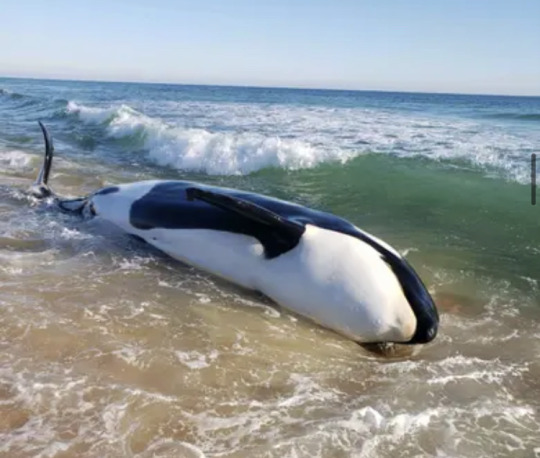

For the first time in recent history, a killer whale stranded in the Southeastern United States. The 21-foot, 5,000 pound adult female passed away very shortly after beaching in Flagler County, Florida on January 11, 2023, and her body was transported to SeaWorld Orlando for necropsy (animal autopsy). The death appears to be the result of natural illness, with no anthropogenic factors.
Orcas are extremely rare off the eastern coast of Florida, and this could well be a once in a lifetime occurrence. After decomposition, the whale’s skeleton will be displayed at the Smithsonian Institution in Washington, D.C.
#tumblr is being stupid and won’t let me link the article#pictures are from daytona beach news-journal#orcas#killer whales#cetaceans#marine mammals#wildlife#animal death#dead animal#seaworld
322 notes
·
View notes
